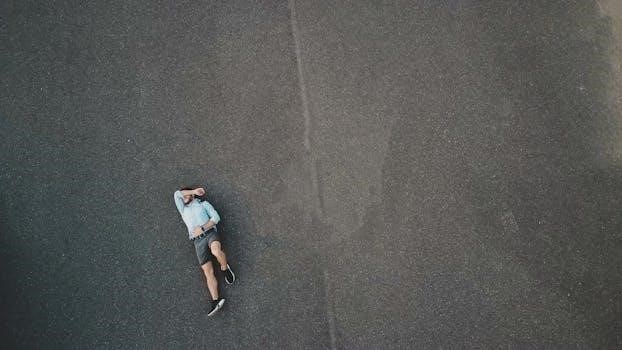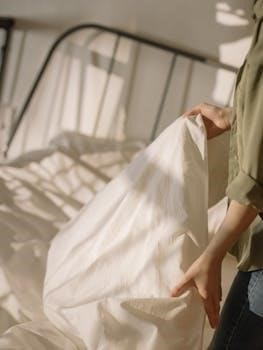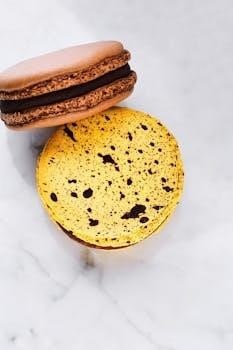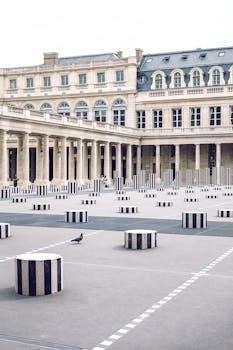French seam pillowcases offer a durable and elegant finish, hiding raw edges within the seam. This method enhances the pillowcase’s longevity and provides a neat, professional look. Many tutorials are available online for easy crafting. They are great for gifting!
Why Choose French Seams for Pillowcases
Opting for French seams in pillowcase construction offers several advantages. Firstly, they provide an exceptionally clean finish by encasing all raw edges within the seam, preventing fraying and enhancing the pillowcase’s durability. This makes them ideal for items that undergo frequent washing. Secondly, French seams create a smooth, comfortable interior, eliminating any scratchy or irritating exposed edges. They also contribute to a more professional and polished look, elevating the overall appearance of the pillowcase. Furthermore, this technique is suitable for beginners due to its straightforward method, making it a great skill to learn for those new to sewing, and a preferred method for crafting long-lasting, high-quality pillowcases. The finished product is both practical and aesthetically pleasing.
Essential Materials and Tools
To begin, you’ll need fabric, a sewing machine, thread, scissors, pins, and an iron. A rotary cutter and mat can also be useful. These simple tools are key for successful sewing.
Fabric Selection for Pillowcases
Choosing the right fabric is crucial for both comfort and durability. Cotton is a popular choice for pillowcases due to its softness and breathability. Consider using high-quality cotton or cotton blends for a smooth and pleasant feel. Fabrics with a tight weave will help prevent the seams from unraveling. For a more luxurious feel, you could opt for satin or silk, but these fabrics can be more difficult to handle for beginners. Select patterns or solid colors that match your bedroom décor. Remember to pre-wash your fabric to avoid shrinkage after sewing, ensuring the finished pillowcase fits your pillow perfectly. Pre-washing will also remove any excess dyes. It is important to consider the fabric’s weight and drape for the best results.
Required Sewing Tools
To begin crafting your French seam pillowcase, you’ll need some essential sewing tools. A sewing machine is the primary tool for efficient stitching. Sharp fabric scissors are important for precise cutting. You’ll need pins to hold fabric layers together during sewing and a seam ripper for correcting any mistakes. Measuring tools such as a ruler or measuring tape will help you achieve accurate dimensions. An iron and ironing board are necessary for pressing seams and creating a crisp finish. Thread that matches your fabric is key. Finally, a rotary cutter and cutting mat are very helpful but are not a necessity. Having all these tools ready will make your sewing experience smooth and enjoyable.
Cutting Fabric for the Pillowcase
Accurate fabric cutting is crucial for a well-made pillowcase. Begin by measuring your pillow and adding seam allowances. Ensure your fabric pieces are straight and the correct dimensions before sewing.
Determining Pillowcase Dimensions
To determine the dimensions, you must first measure your pillow. Add seam allowances to these measurements. For standard-size pillows, a typical cut size is around 27 inches wide by 40 inches long. Remember to factor in extra length for a flap if you are making an envelope closure. For example, if you desire a 5 inch flap, add ten inches to the length. If your pillow is a different size, adjust the dimensions accordingly, keeping in mind that French seams require a little extra fabric for the seam allowance, usually 5/8 of an inch or 3/4 of an inch. This added allowance ensures the raw edges are fully enclosed within the seam. Always double-check your calculations before you cut.
Cutting Fabric Pieces
Once you’ve determined your pillowcase dimensions, it’s time to cut your fabric. Lay your chosen fabric on a flat surface and ensure it’s smooth. Using a rotary cutter or fabric scissors, cut the main fabric piece according to your previously calculated measurements. If you’re adding a flap, cut the appropriate extra length. Precision is key here to achieve a well-fitted final product. If you are using a patterned fabric, pay close attention to the pattern and make sure the pattern will be running in the correct direction. Double-check your measurements one last time to avoid any mistakes. Be sure to cut two of the same size rectangles.

Sewing the French Seam — First Seam
This step involves joining the fabric pieces with wrong sides together, which might seem counterintuitive, but this technique forms the basis for the French seam. This will enclose all raw edges.
Joining Fabric Wrong Sides Together
Begin by placing the two fabric pieces for your pillowcase with their wrong sides facing each other. This is a crucial step in creating a French seam, as it sets the stage for encasing the raw edges later on. Ensure that all edges are aligned neatly. Pin them securely to prevent shifting during the sewing process. This method differs from typical sewing, where right sides are together, and is essential for achieving the clean finish of a French seam. Take extra care in this step to ensure accurate seam allowances and an even stitching line, as any inconsistencies here will affect the final appearance of your pillowcase.
Sewing the Initial Seam
With the fabric pieces still wrong sides together, sew a straight seam along the three open edges of the pillowcase. Use a 1/4-inch seam allowance for this initial seam. It’s important to maintain a consistent seam allowance for a neat finish. Backstitch at the beginning and end of each seam to secure the stitches. This first seam will be visible on the outside of the pillowcase before we create the French seam. This initial stitching creates the first layer of protection for raw edges and prepares the fabric for the second, enclosing seam.

Sewing the French Seam ⎼ Second Seam
After the first seam is pressed, we prepare for the second. This second seam will encase the raw edges from the first, creating a clean and durable finish. Accuracy is key here.
Trimming and Pressing the First Seam
Before proceeding to the second seam, it is essential to trim the first seam allowance. This step reduces bulk and ensures a neater finish. Use sharp scissors or a rotary cutter to trim close to the stitching line, typically around 1/8 inch. After trimming, meticulously press the seam open. This step is crucial for achieving a crisp, flat second seam and preventing the enclosed edges from being bulky. Be thorough when pressing the seam, using a hot iron and steam if necessary. This careful pressing will make the next sewing step much easier and give your pillowcase a polished, professional look.
Sewing the Second Seam
With the first seam trimmed and pressed, now it’s time to sew the second seam. Turn the pillowcase so that the wrong sides are now facing out and the first seam is enclosed. Pin the edges together securely. Stitch along the entire length of the previously sewn seam, using a 3/8 inch seam allowance. This seam will completely encase the raw edges of the first seam. Be sure to sew straight and consistently for best results. The second stitching should be parallel to the first. This creates the clean, durable, French seam, and hides all the raw edges within.

Finishing the Pillowcase
The final steps include turning the pillowcase right side out and pressing the seams flat. Adding a flap or envelope closure ensures the pillow stays securely inside. This completes the project.
Turning and Pressing the Pillowcase
After completing the second seam of the French seam, the next crucial step involves carefully turning the pillowcase right side out. This action will reveal the neatly concealed raw edges, a hallmark of the French seam technique. Once turned, it’s essential to press the pillowcase thoroughly. Pay close attention to the seams, ensuring they are flat and crisp. A well-pressed pillowcase not only looks more professional but also lays better on your bed. This pressing step significantly enhances the final appearance and overall quality of your hand-sewn pillowcase. Iron all edges for a polished finish.
Adding a Flap or Envelope Closure
To finalize your French seam pillowcase, consider adding a flap or envelope closure. This design feature keeps the pillow securely inside the case and eliminates the need for zippers or buttons. An envelope closure involves creating an overlapping fabric section at the open end of the pillowcase. This overlap is typically created by folding the edge fabric, creating a pocket. This method is both simple and practical, providing a neat and tidy finish. Ensure the flap is of adequate length to keep the pillow securely covered. The closure adds to the functionality of the pillowcase.

Variations and Customizations
Personalize your French seam pillowcases by adding decorative edges or using different fabric combinations. These simple customizations can elevate the look and style of your finished project, making it unique.
Adding Decorative Edges
Enhance your French seam pillowcases with decorative edges to add a unique touch. Consider using contrasting fabric for a piped edge, or a delicate lace trim for a softer look. You could also experiment with different stitching techniques, like a simple zigzag or a scalloped edge, to create visual interest. These additions offer an opportunity to showcase your creativity and make each pillowcase a personalized work of art. Remember to factor in extra fabric for these decorative elements when cutting your pieces. Applying these techniques can transform a basic pillowcase into a bespoke home decor item.
Using Different Fabric Combinations
Experiment with diverse fabric pairings to elevate your French seam pillowcases. Combine a patterned fabric with a solid color for a striking contrast or use two different coordinating prints for a playful touch. Consider using different textures, such as a soft flannel with a smooth cotton, for a unique feel. Utilizing scraps of leftover fabric can create charming patchwork designs. Ensure all fabrics are of similar weight to avoid uneven seams. These combinations offer endless possibilities for personalizing your pillowcases and making them uniquely yours. These additions add personality to the project.
